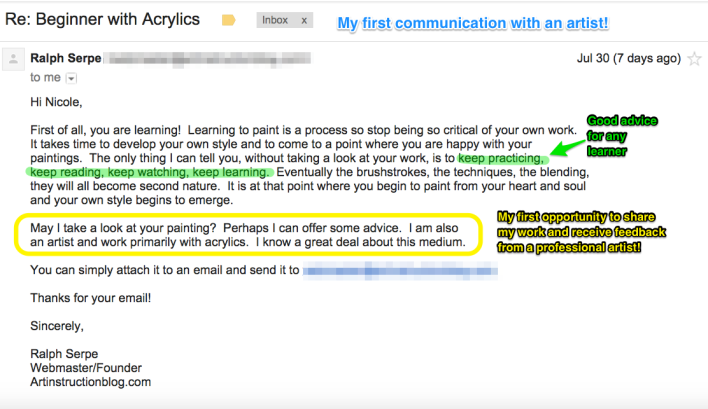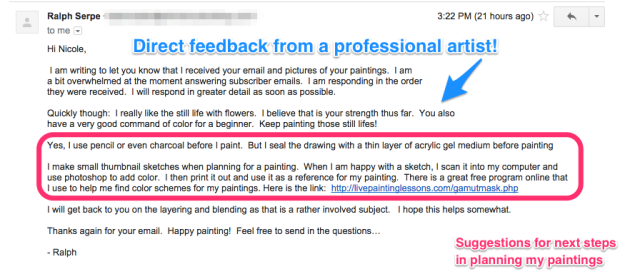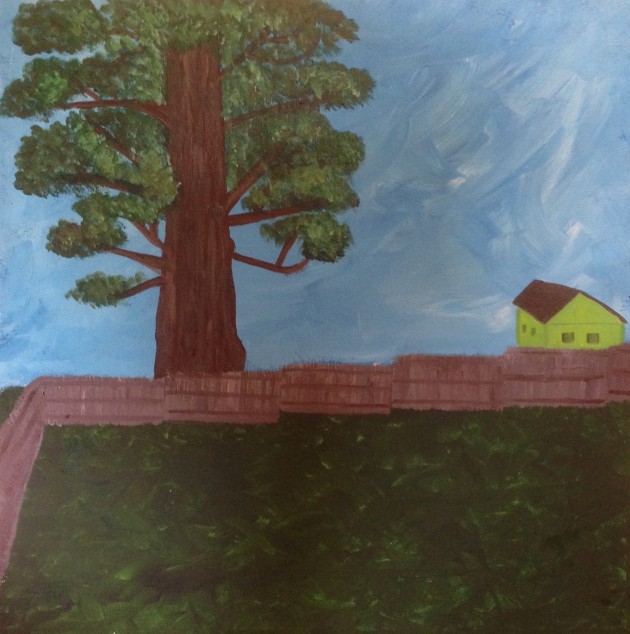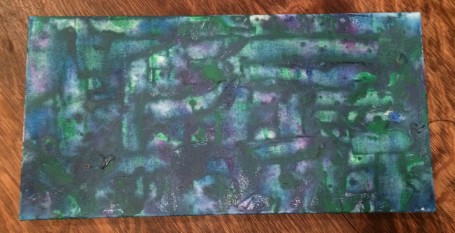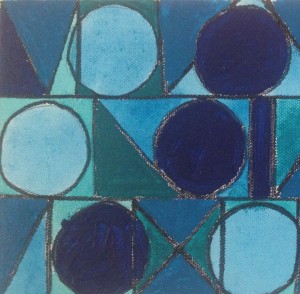I was finally able to connect with an artist this week! After falling in love with the helpful articles, blog posts, and videos on http://www.artinstructionblog.com/ I reached out to the webmaster of the site for some advice and feedback. Ralph got back to me within the week! He gave me some suggestions for a beginning painter and even offered to review some of my work to give me specific feedback! I was very excited, to say the least.
I am so happy to have finally begun to develop this part of my Personal Learning Network where I can personally connect with people who can help me learn. Upon Ralph’s suggestion, I decided to investigate http://livepaintinglessons.com/gamutmask.php. I signed up for two free art videos; “Landscape” and “Still Life” and have already received one in my email! I can’t wait to try these new lessons.
In his reply, Ralph also shared how he plans for painting. He shared that he does a sketch on paper and scans it into Photoshop to add color. Then he prints out his drawing and uses it as a guide to sketch his painting on the canvas. I am not ready to tackle Photoshop just yet, but I decided to modify Ralph’s technique and draw my plan on a paper with similar dimensions to the canvas I wanted to work on.
I have been inspired by a huge Pine Tree that grows in the back of my neighbor’s yard, so this week I decided to attempt to capture its beauty.
I relied on my previous learning from this NLP to create a cross-hatched sky and grass, and used blending techniques that I learned from Glen Farquhar to create the fence. I used my plan to draw the shape of a tree and shed directly onto the canvas.
Then, I recalled what I learned about using the chisel tip of a flat brush to create the straight lines of the fence, and the curved branches of the tree. I used my learning about the Filbert Brush to create the illusion of leaves, and layered lighter colors over darker ones to create depth and dimension in the leaves of the tree.
My next steps in my NLP will be to follow the lessons from livepaintinglessons.com to learn more about light and shadows in my painting.

